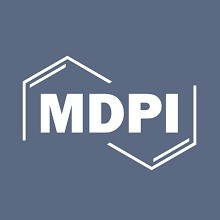
مقاله انگلیسی حسابداری مدیریت و کنترل در مؤسسات آموزش عالی
Abstract
Keywords
Introduction
Theoretical Background
Methodology
Results
Appendix A
References
Abstract
The new public management reforms have led to significant changes in higher education institutions (HEIs) regarding the management accounting and control (MAC) of these organizations. Therefore, this paper provides an overview of the main studies on MAC in these types of organizations through a systematic literature review (SLR). The PRISMA guidelines were followed, and data were collected from the Web of Science and Scopus databases. The final sample encompassed 50 articles, published between 1981 and 2020. The results show that MAC research tends to focus on management control systems and performance evaluation systems. They also suggest that, although the development and implementation of various MAC tools are crucial for HEIs, such implementation often is partial. This is due to the stakeholders’ perceptions/attitudes regarding the importance of such tools. The results also indicate that institutional theory is the most addressed one. Most of the time, HEIs implement MAC tools due to external pressures. By synthesizing the main trends in MAC, this SLR intends to provide a theoretical contribution to the literature in this research field. Several themes for further research are suggested, such as assessing the relationship between MAC and the management of “knowledge” and intellectual capital in these institutions, and addressing sustainability issues. From a practical viewpoint, HEI managers can obtain important insights to apply the most appropriate tools to their institutions.
Introduction
In past decades, accounting ceased to have as its sole purpose the mere registration of financial transactions, becoming a strong tool to, among other things, evaluate organizations’ performance and to maximize their profitability. Management accounting (MA) emerged as a means of responding to the shortcomings of financial accounting, which focuses essentially on controlling and recording relations with third parties, variations in equity and determining the net result in a global context (Hardan and Shatnawi 2013). In the 1980s, Johnson and Kaplan (1987) noted the need for organizations to have a system that could provide information on strategic variables deemed relevant to create value. For example, the Activity-Based Costing (ABC) system, developed by Johnson and Kaplan (1987), emerged as a response to the limitations inherent in the existing systems, which were known for not being timely and rigorous. As for management control, several studies have focused on addressing the deviations between the objectives initially planned and the ones achieved. Once the deviations have been estimated, corrections must be made.
